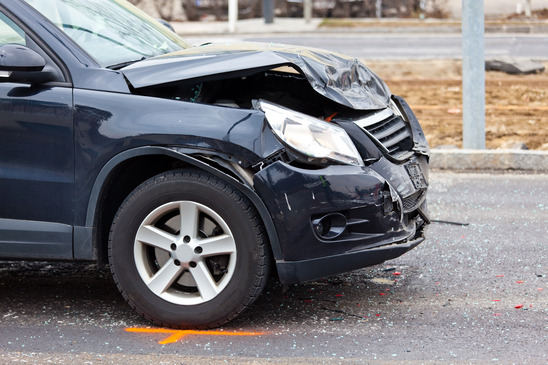MIAMI, FLORIDA – Data from the Florida Department of Transportation lists 1,173 wrong-way crashes (also known as “head-on collisions”) on Florida’s freeways and toll roads from 2003 to 2012. In those, 164 people were killed and 1,322 hurt.

Seaside attraction Miami, which is the largest metropolitan area in Florida, is no exception. Some factors noted in Miami that are not common in other areas which can cause a motorist to have a head-on collision include large streets that resemble highways where people tend to drive very fast; some large streets and highways with places that don’t have a shoulder to seek safety on when faced with an oncoming wrong-way motorist; a highway and toll system that can be very confusing for people who are not from Miami, sometimes causing them to panic when trying to make decisions and end up going the wrong way; very heavy downpours of rain that occur quickly and with no warning where the driver literally cannot see out of the windshield; and tourists (particularly international ones) driving who are not familiar with the area. Miami can be a challenging place to drive, especially for the uninitiated.
Miami can especially be a challenging place to have a serious automobile accident, whether you are a visitor or Florida resident. Attorneys at Wolfson & Leon have a combined 62 years of experience representing accident victims in Miami. If you contact Wolfson & Leon immediately after your accident, even before speaking to the car insurance companies involved, you will not be misled into making any statements by a car insurance company that will come back to haunt you and harm your case. Wolfson & Leon will make a thorough investigation of your personal situation and assist you when it comes to making statements to insurance companies.
When you are in a head-on-collision, you are often placed in a tight spot even superheros would have trouble getting out of. In a lot of cases, you may not see it coming in time to protect yourself or you may be on a stretch of highway with no shoulder and nowhere to go to get out of danger. The oncoming car may only careen into your lane right in front of you seconds before the impact and there is no time to do anything. The aftermath usually is a disaster for all, as possibilities include death, coma, extended physical therapy, and extremely serious injuries that require constant (24-7-365) ICU care and monitoring. Few people luck out and end up with no injuries or relatively small ones. In almost all cases of these types of collisions, the cars involved are totaled, piling even more stress onto everyone involved in the crash.
Why is This Type of Accident Deemed the Most Dangerous?
A head-on collision happens when two vehicles collide with each other front bumper to front bumper. When the two cars collide, there is suddenly a lot more momentum behind the collision than when they were traveling alone and it causes extra harm to the occupants of the car because of its multiplying effect on miles per hour. If each car is traveling at 50 mph when they collide, the combined force of energy on both car’s occupants will equal 100 mph, double their original speeds, and quite devastating for the human body to experience. This is why head-on-collisions are the ones that cause the most fatalities and serious injuries.
To What Extent Can My Car Help to Protect Me in a Head-on Collision?
Current federal regulations for all automobiles require that a car be designed to withstand head-on collisions at 30 to 35 mph at a minimum. Manufacturers are also required to perform several test crashes before the model is put into production to be sold to the public. Unfortunately, most head-on-collisions happen at much higher speeds. People should also note that even a slow accident between two cars going 25mph will cause an impact equivalent to crashing into a brick wall while going 50mph. So your car’s safety equipment and body design can only protect you and your passengers up to a certain extent.
When choosing a car to buy, make sure the model has a good record of protecting people in collisions.
Some manufacturers routinely exceed the minimum impact standards for the cars they manufacture. They also typically use denser and higher quality materials to make the body extra strong. These types of cars are a recommended option to look into when purchasing an automobile.
Please click on this link to jump to Part 2 of this series on Head-on-Collisions, [“What Types of Injuries Can Be Sustained?”]
*****
If you or a loved one has been seriously injured or killed, there is no time to waste to protect your legal rights and to avoid being taken advantage of by automobile insurance companies. Contact Wolfson & Leon today for assistance in putting together the broken pieces left in the aftermath of a serious automobile accident as soon as possible!
 Miami Personal Injury Attorney Blog
Miami Personal Injury Attorney Blog

